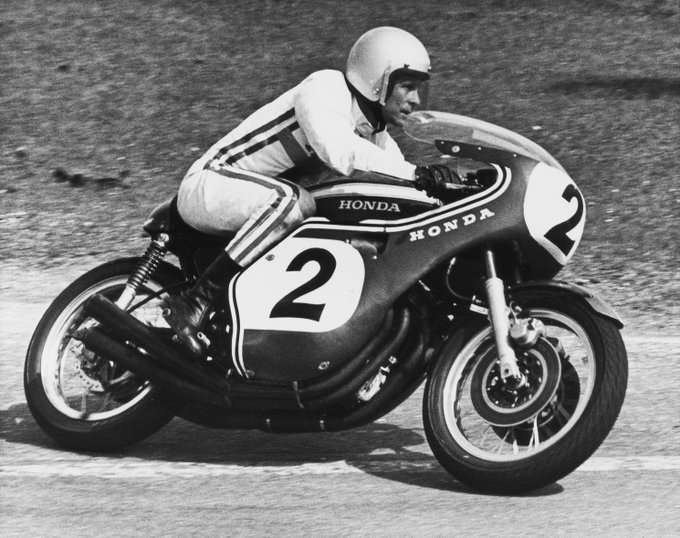
by Todd Halterman from https://www.autoevolution.com
On Twitter by Honda Powersports: Monday’s passing of Dick “Bugsy” Mann, American Honda sends its heartfelt condolences to his family, friends and fans. Mann’s 1970 Daytona 200 win aboard the CR750 (the racing version of the CB750 four-cylinder) was momentous in Honda’s history Thank you, Dick, and godspeed.
The Honda CB750 Changed the Way Motorcycles Were Made, Raced and Sold
Though now highly prized for their potential as re-imagined cafe racer machines, the venerable Honda CB750 was – back in its infancy – the bike that changed the game.
So how did it happen that the Japanese took over the worldwide motorcycle manufacturing industry? To a large extent, it came down to the creation of a single model.
With five consecutive championship titles under their belts, Honda decided to withdraw from the World GP circuit in 1967 with a plan to develop high-performance consumer motorcycles at the forefront of their vision.
While Honda exported more than half of their output back in the mid-’60s, they didn’t make a large-displacement sport bike model which would appeal to the hardcore rider in the U.S.
And it’s not like the honchos at Honda failed to notice that glaring deficiency. Sales of Honda motorcycles in America were flagging in 1966, and the company knew a brand-new worldview was in order. While the company had created the Dream CB450 in 1965, they were still being outgunned by big bikes from other makers. The CB450 sold well, but for the vast majority of American riders, it just didn’t have the requisite zing and bottom-end torque they craved.
What really drove Yoshiro Harada, the head of Honda product development at the time, was hearing the news that Britain’s Triumph was deep in the development process of a high-performance, 3-cylinder 750 cc engine. With the ante thus upped, Honda laid out plans to compete by creating their own 750 cc engine, which would lay down 67 horsepower to overtake the juice you could get from the 66-horsepower Harley-Davidson’s 1300 and the proposed Triumph Triple.
Though Honda was already the industry’s leading maker of motorcycles (due in no small part to the success of the most popular motorcycle in history, the Super Cub), the introduction of the CB750 sought to become the world’s top manufacturer of quality motorcycles as well. They were up against some formidable competition as comparable models from Triumph, BMW, and Harley were already on the road.
So what were the targets? Honda wanted to make a long-range, high-speed touring machine, so they turned to science for answers in the form of a newly-minted paradigm dubbed “ergonomics.”
Those targets included: Stability at highway cruising speeds, a reliable and cooled braking system that would handle frequent rapid decelerations from high speed, minimal vibration, and noise to fight rider fatigue on long hauls with a rider position which complimented the smoother power plant, lights and instruments which were large, gauges which were easy to read, easy maintenance and servicing for all the various modules of the bike and the use of top-quality materials and production techniques.
Perhaps the most significant innovation for Honda’s showpiece bike? The adoption of disc brakes. While that design decision proved costly and time-consuming, it was also a stroke of brilliance and one which made the CB750 a favorite of the serious riding set.
Released to the U.S. public in January 1969, the announcement of the new bike’s retail price, $1,495, was met with stunned silence at a dealer meeting in Nevada. The other shoe had officially dropped. Large-displacement bikes were selling at that time for between $2,800 and $4,000, and the 2,000 dealers on hand for the announcement exploded into applause when they recovered their wits.
And they had good cause for their optimism. The CB750 immediately commanded a premium sales price in dealer showrooms of between $1,800 and $2,000 to get one out the door.
Featuring an integrated crankshaft and metal bearing to replace the split-type, press-fit crankshaft with a needle bearing used in previous Honda motors, the CB750 was a great leap forward in design as well as price.
As great as this new machine was, the company initially had a serious problem. They could only manage to make something like five bikes a day, and that was clearly not enough to meet the demand for what had become a major hit with the market. Production was pushed to 25 units per day and then to 100 units, but that still left an enormous pile of backorders building up under and an entirely expected sales landslide.
It became clear that the production of the original sand-molded crankcases would never meet the rate requirements of mass production, so the factory switched over to producing crankcases of a metal, die-cast construction. The bikes were such a hit with the riding public that the production of engines and chassis was moved to a Suzuki factory in mid-1971. The “sandcast” CB750 models are now fetching enormous prices from collectors of up to ten and fifteen times higher than their new-off-the-line premium price back in the day.
But what really made the bikes a smash hit with the public?
Performance. Pure and dependable performance.
The factory racing team at Honda R&D took the new machines to compete at a 10-Hour Endurance Race in August 1969 to coincide with the commercial launch of the big bike, and Honda dominated, notching one-two finishes with the teams of Morio Sumiya and Tetsuya Hishiki taking first place and Yoichi Oguma and Minoru Sato pulling in a close second.
The deal was done when rider Dick Mann blew away the field on his CR750 during the AMA Daytona 200-Mile Race run during March 1970. The field was now wide open for large-displacement Japanese bikes, and in 1972, Kawasaki launched the 900cc ZI to compete on the big-bike stage…and the rest is, as they say, history.
